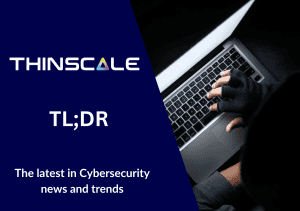In today’s rapidly evolving digital landscape, the necessity of safeguarding sensitive data and systems cannot be overstated. In particular, organizations relying on virtual environments to enable their workforce like virtual desktop infrastructure (VDI) and Desktop as a Service (DaaS) solutions must address the issue of endpoint security.
During a recent webinar, I discussed the importance of securing the edge in virtual desktop environments, looking at the challenges and threats that demand attention.
Understanding VDI/DaaS Vulnerabilities
Many organizations assume that their choice of VDI or DaaS alone provides sufficient security. However, the reality is quite different.
These virtual environments, while offering flexibility and scalability, share a common Achilles’ heel—the endpoint. Whether you opt for VDI or DAAS, or a blend of both, the endpoint remains a pivotal component in your overall service delivery.
What organizations often overlook is that VDI and DaaS alone do not constitute a comprehensive security strategy. Neglecting to secure the endpoint can expose organizations to various vulnerabilities, including viruses, scams, and human errors.
It’s not surprising that cybercriminals frequently target endpoints, making them the most attacked, and often the weakest, link in the security chain.
Key Security Threats in Virtual Environments
While the list of potential threats is extensive, let’s spotlight a few that are particularly damaging in virtual environments:
Endpoint Control and Protection Gaps
Failure to control or adequately protect endpoints can open doors to unauthorized devices, potentially leading to vulnerabilities and compromises in your overall security posture.
Hacking and Social Engineering
Techniques such as hacking and social engineering are commonly employed to extract user credentials. Once stolen, these credentials can grant unauthorized access to VDI environments, posing a significant threat to data security.
Data Exfiltration
Data leakage, often a result of insufficient data safeguards or the absence of controls, can allow sensitive information to be exfiltrated from your virtual environment.
Zero-Day Exploits
The ever-present threat of zero-day exploits remains a significant concern. These exploits can compromise devices and must be effectively blocked and mitigated through a robust security strategy, such as a zero-trust approach.
Defending Against Common Attack Vectors
In virtual environments like VDI and DaaS, cybercriminals have several attack vectors at their disposal. Let’s examine a few and explore potential solutions:
Malware and Ransomware
Malicious software can infiltrate endpoints through infected files, phishing emails, or compromised downloads. Preventing such attacks requires robust antivirus and anti-malware solutions, regular system updates, and user education.
Phishing and Social Engineering
Deceptive emails and social engineering tactics can trick users into revealing sensitive data or credentials. Implementing multi-factor authentication, access control, and user training can help mitigate these threats.
Outdated Software and Vulnerabilities
Outdated software, including virtualization components, can contain vulnerabilities that cybercriminals exploit. Maintaining a proactive patching strategy and conducting vulnerability assessments are crucial prevention measures.
Weak Authentication
Weak authentication, such as default credentials, can lead to unauthorized access. Implementing strong password policies, multi-factor authentication, and access controls is essential to prevent unauthorized entry.
Data Leakage
Data can inadvertently leak from virtual environments due to misconfigurations or lax controls. Deploying data loss prevention solutions and enforcing strict access controls can prevent data leakage.
Zero-Day Exploits
Staying informed about emerging threats and adopting a zero-trust approach, which allows only trusted actions on endpoints, can be effective strategies to counter zero-day exploits.
Securing the Endpoint is Imperative
In summary, can you be secure with VDI and DaaS alone? The answer, as we’ve explored in this discussion, is a resounding “no”.
While VDI and DaaS offer valuable benefits, they must be complemented by a robust endpoint security strategy.
Implementing measures such as a zero-trust model, proactive monitoring, and user education is essential to bolstering security in virtual environments.
If you have further questions or wish to explore these topics in greater depth, please do not hesitate to reach out.



